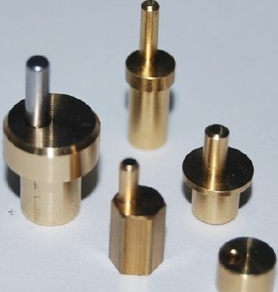What is Eccentric Turning on CNC Lathe
Eccentric turning is a technique often used in CNC turning, which refers to rotating the workpiece eccentrically to achieve specific design requirements. In this article, we will explore the concept of eccentric turning, its benefits, applications, and the processes involved.

The meaning of eccentric turning
Eccentric turning, also known as eccentric machining, is a technique used on CNC lathes to create eccentric features in a workpiece. In normal turning operations, the workpiece is centered and held in the chuck and then machined along the central axis. However, eccentric turning involves intentionally moving the workpiece off-center, causing the machining operation to be misaligned with the central axis. This offset creates eccentricity, which can produce unique shapes and features.
Process of Eccentric Turning
Step 1: Artifact Setup
The first step in the eccentric turning process is the mounting of the workpiece. Secure the workpiece to the lathe chuck, making sure the workpiece is tightly clamped and accurately centered. The workpiece must be properly aligned to obtain the required eccentricity. This is accomplished by offsetting the center of the workpiece from the lathe’s axis of rotation.
Step 2: Tool Selection and Setup
Once the workpiece is securely clamped, the next step is to select the appropriate cutting tool and install it on the lathe’s tool holder. Cutting tools should be selected based on the material to be turned and the finish requirements. Make sure the tool is properly aligned and firmly positioned to avoid any deflection during machining.
Step 3: Determine eccentricity
In order to achieve eccentric turning, it is necessary to determine the distance between the axis of rotation of the lathe and the center of the workpiece. This can be done by calculating the required eccentricity or measuring the offset using a dial indicator.
Step 4: Program the CNC Lathe
Program the CNC lathe to specify the desired machining operations, such as turning, facing, and grooving, as well as the desired feed rate and depth of cut. Programming can be done using CNC software or directly on the lathe control panel, depending on the capabilities of the machine.
Step 5: Start the machining process
Before machining begins, double-check all settings and make sure the lathe is in the correct operating mode. Lathes should run at appropriate speeds and feeds to achieve ideal machining results. Continuous monitoring of the machining process is required to ensure that eccentricity and machined dimensions remain accurate.
Step 6: Finishing and Quality Control
After the eccentric turning process is completed, the finished workpiece must be inspected for size, surface finish, and overall quality. This can be done using various measuring instruments such as calipers, micrometers and surface roughness testers.
Advantages of eccentric turning
1. Complex profiles: Eccentric turning can process complex profiles that cannot be achieved by traditional turning. By offsetting the workpiece, complex shapes, curves and contours can be machined with high precision.
2. Asymmetric Forming: It can process asymmetric shapes, where one side of the workpiece is larger or has a different profile compared to the other side. It is mostly used in the production of eccentric shafts, cams and crankshafts, etc.
3. Cost-effective: By utilizing eccentric turning, complex designs can be achieved without the need for specialized machinery or additional manual operations. This reduces production costs.
Applications of eccentric turning
Automotive industry: Eccentric turning is widely used in the automotive industry to produce eccentric shafts, camshafts, crankshafts and other components. These parts require precise eccentric machining to function properly.
Aerospace Industry: Eccentric turning is used in the aerospace industry to produce turbine blades and precision components. It can precisely shape the complex contours and curves required for aerospace applications.
Mold Industry: Eccentric turning is used in the mold industry to manufacture moulds, molds and special cutting tools. It is capable of producing the intricate details and contours required for precision molds.

Leave a Reply
Want to join the discussion?Feel free to contribute!